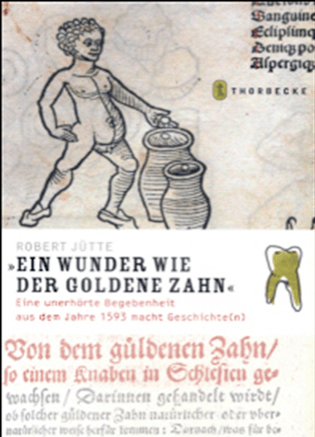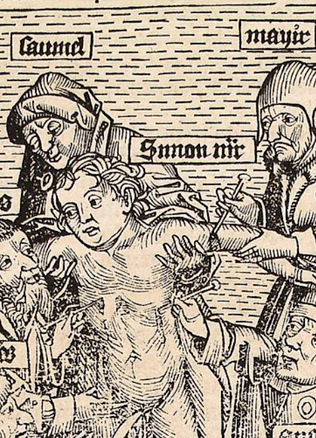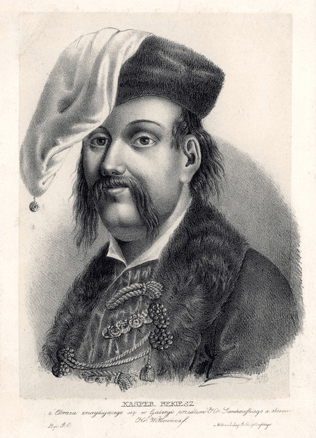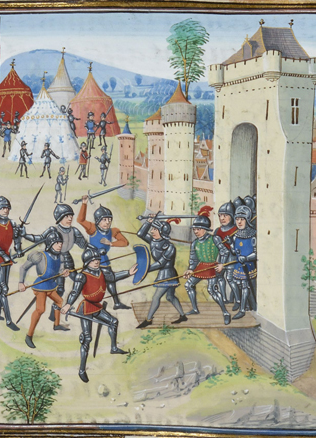The Myth of Baltic Unity
The concept of the “Teutonic-Baltic war” concerning the heroic and tragic struggle of the Baltic tribes against the German Order that imposed the foreign Christian faith on them that was described in the book The Lithuanian War with the Teutonic Order (Vilnius, 1964) became a canon in the historical consciousness of Lithuanians. The authors of the book “demanded” responsibility for everything from the Lithuanians, who had been the strongest and most active. In the pages of this monograph, they carefully counted the strategic and tactical mistakes of the Lithuanian rulers and reproached their actions. Rimantas Jasas wrote “(…) the changes brought by the Mongolian-Tatar invasions to the political situation in Rus’ strengthened the “Eastern” focus in the feudal policies of Lithuanian in the 13th-14th century, which became the main focus, and at the same time weakened the evaluation of the western, purely Lithuanian, lands in the ruling levels of Lithuania. (…) Withstanding this power was too difficult for the Prussians, even though they were supported by the Western Lithuanians, while no more important assistance came from the Lithuanian side after 1263 for various reasons (the struggles for the throne after Mindaugas’ murder, provocative policies of Vaišelga and Traidenis’ wars with Volhynia), though at the time it appeared that with just a little more help, the Teutonic knights would have been thrown out of Prussian lands.” Other works asserted that the Lithuanian state was formed by all the Balts in the fight against the Teutonic Order, and that Lithuania, when ruled by Mindaugas, actively supported the Prussian and Yotvingian-Sudovian struggle against the Order as much as the conditions allowed. Lithuanians cooperated in particular with the Yotvingians, the neighbouring Baltic tribe. A significant example of Baltic military unity is considered to be the Battle of Saulė on September 22, 1236. Today in the Republic of Lithuania, the date of the battle is officially recognised as “the Day of Baltic Unity”, when the joint Samogitian and Semigallian army defeated the forces of the Brothers of the Sword and European knights.
Do You Know?
Though the Battle of Saulė (1236) is considered an important example of the romanticized paradigm raised by Baltic unity in combat, it is doubtful that we can find manifestations of Baltic unity in it, as the Latvians, who fought in the ranks of the Germans, remained faithful to them until death, while the participation of the Semigallians in the battles is doubtful, because there is a basis to think that they pursued and killed the remaining soldiers of the army that came back to Riga.
The search of the Baltic super-state
The search for Baltic unity during the Soviet period was a sure thought-out anachronism of the time where they looked for answers as to why the Lithuanian state didn’t defend lands that had come into their arms willingly and did not stay the large, strong and independent country it had been, because it would have taken on a solid ethnic and territorial shape. The opinions of these researchers had deep roots, the concept of the natural unity of the Balts that was based upon a common origin, related languages, similar customs and traditions and a unified territory. The foundation for this concept was laid by the comparative linguistic research of Vladimir Toporov and his colleagues in the 1960s that revealed that until the “expansion” of the Eastern Slavs in the 5th-7th century, the world of the Balts extended not only to the Dnieper River, but to the upper branches of the Volga and Oka rivers. This heated the imagination of some Lithuanian intellectuals and even scientists: a continuous Baltic ethno-strata, stretched across a massive territory and seemed like a unified Baltic state with a descendent that made to the Middle Ages: the Grand Duchy of Lithuania.
This construct is an artificial intellectual vision, but it causes emotions of pride in our common past, which is why it caught on in some parts of society’s worldview.
Unfortunately, in reality there were no elements of unity as such. The term Balts is an artificially created term, as a common term for this entire strata to describe it is not known (and it is doubtful whether there was). The Germans called tribes to the East of them the Aestii, with the name itself most likely Germanic, and only scientific research showed that one of the tribes were Balts. We know nothing about the internal and external ties of the Baltic tribes.
The expressions Baltic unity, a common Baltic interest, the Teutonic-Baltic war, the creation of a Lithuanian state of all Balts are foreign concepts for historical sources from the end of the 12th century to the 12th century.
Thus, as Mindaugas began consolidating his power in the middle of the 13th century, his interest in the Balts related to Lithuanians were formed in concepts that were normal to call a state in those times, a state that was a multi-ethnic empire. The Lithuanian king proclaimed that he was preparing to join the nearby lands of pagans and unbelievers (i.e. Orthodox believers) to his kingdom by force for the faith of Christ (in 1251 and 1255). After putting an end to the union with the Brothers of the Sword (1261), he waited for the surrender of Livonia’s tribes that were conquered by the Germans to his rule in vain. With the appearance of the military Christian orders in Baltic lands, the political situation in essence did not provide a choice to the pagans – the elite of one or another Baltic land had to choose a master and become his subject (either the Christian Germans, Poles, Orthodox Russians or Lithuanians). And that meant in any case the limitations of the possessed power (i.e. freedom) and the receiving of new duties and obligations. This is why the territorial programme declared by Mindaugas, the unifier of all the Balts, was the agreement of an elite living in a specific land to recognise Mindaugas’ rule. This imperial interest of the Lithuanian monarch had a negative effect on relations with neighbouring pagans.
Why didn’t neighbouring tribes join the Lithuanians?
The Lithuanians’ relations with their neighbours until Mindaugas’ rule could not be described with the term Baltic unity.
The military raids and plundering of Lithuanians against the Dauguva Latvians and Semigallians turned them into serious Lithuanian enemies, who contributed to the entrenchment of the Christian colony of Germans in Riga.
Lithuanians not only controlled a part of the Selonian tribe politically, but they had already assimilated the southern part of their land, just like the northern lands of the Semigallians, Curonians, and Yotvingians, as well as Dainava in the Lower Nemunas basin. Mindaugas and the Lithuanians invaded parts of Yotvingians’ territory as fiercely as the Poles and the Russians. Mindaugas had the fewest opportunities in taking part in this divvying up of territories, compared to his stronger and better-organised neighbours. In the Battle of Saulė we can also not find any sort of manifestations of Baltic unity, because the Latvians, who fought in the ranks of the Germans, remained faithful to them until death, while the participation of the Semigallians in the battles is doubtful, because there is a basis to think that they pursued and killed the remaining soldiers of the army that came back to Riga.
Do You Know?
The last of the Balts to be conquered by the Teutonic Order were the Yotvingians, and after them the Lithuanians. The tensions in the relations between the Lithuanian monarch and Yotvingian nobility was insurmountable, even when deadly threats arose for either of them. The relations between Traidenis (who ruled Lithuania from 1268 to 1282) and the Yotvingians were regulated by the subjective position of the Lithuanian ruler, and not a “common Baltic interest.” Whereas for a part of the Yotvingian nobility, the fight against the Teutonic Order also did not seem something life or death – they didn’t need the help of Lithuania. The Yotvingians in Podlasie were ready to peacefully become baptised and submit to Duke Casimir of Kujawa or look for refuge from the Order with the Poles. Other Yotvingians conceded control to the Kingdom of Galicia-Volhynia, while yet others opened their heart to the Christianity thrust upon them by the Teutonic Order. Then there was a fourth group that joined Lithuania. There was even a fifth group, which was shown by Yotvingian noble Skomantas’ oscillating between Lithuania and the Order.
The relations of Lithuanians with the neighbouring Baltic tribes were regulated by specific political realities, perhaps traditions dictated by predecessors, the experience of others. Baltic unity is today only a mythologized paradigm.
Literature: A. Nikžentaitis, Nuo Daumanto iki Gedimino: ikikrikščioniškos Lietuvos visuomenės bruožai, Klaipėda, 1996.
Artūras Dubonis



